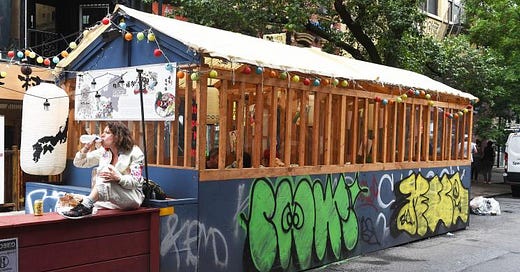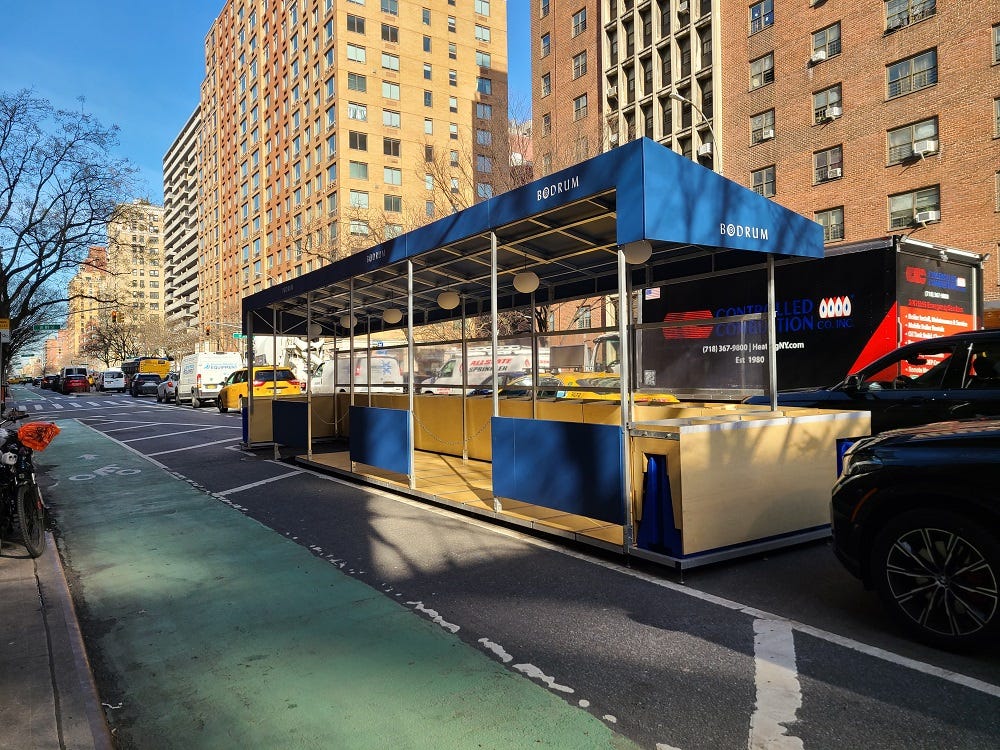The Rise & Fall of NY Outdoor Dining
New Yorkers love dining outdoors. Anytime the weather climbs over 65 degrees, you’ll bet the sidewalk cafes are teeming with life.
Over the past 4 years, NYC experienced a rise in temporary sidewalk dining structures. Spurred by the pandemic, the dining sheds offered a place for cautious individuals to dine outside. Once the COVID panic subsided, the city allowed the sheds to remain through the Temporary Open Restaurants Program.
A few weeks ago, I noticed that some of the beloved dining sheds in my neighborhood were disappearing. That’s because NYC launched Dining Out - a new program aimed at standardizing dining sheds and ensuring their safety. The temporary sheds approved during the pandemic needs to go through a new, more stringent review process. This means owners will need to tear down and rebuild their structures, a costly endeavor in an industry with thin margins.
What does this new program offer?
A few things. For one, the city is taking an open source approach to the shed designs. Over the past year, the city partnered with local design firms to build compliant prototypes through out the city. Design files are publicly available should a restaurant owner pursue one of these pre-approved designs. This allows owners to save on design fees and go straight to a fabricator without having to worry about compliance.
Secondly, the city assembled a marketplace for all things dining shed. The list includes builders, designers, fabricators, and storage facilities for storing the dining sheds in the winter. Going through an approved partner on the marketplace doesn’t guarantee an expedited permit, but hopefully alleviates the pain point of finding legitimate vendors.
We’ve seen shoddily built parklets all over the city. Some can cause a health and safety concern. Some become a haven for rats, and others have extremely questionable electrical and wiring practices. Overall, I think this is a good thing. While a bureaucratic headache, permits exist to ensure public safety. I appreciate that the city put in a lot of effort (and tax dollars) to create guidelines and a process for restaurant owners who choose to pursue outdoor dining options.
But the math has to math for restaurant owners. Does the additional income that the parklet brings exceed the operational costs of building, storing, and maintaining that space?
Roughly 1/3 of the folks that applied for a temp COVID permit have applied for the new program. I guess that means the remaining space will go back to parked cars and pedestrians.






